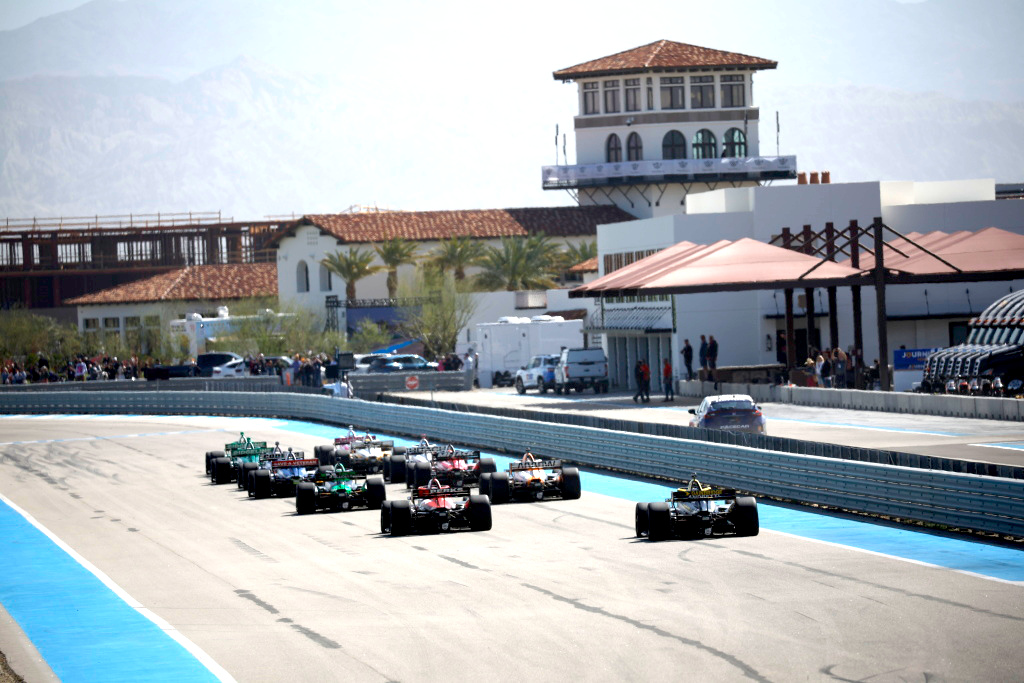
If IndyCar and The Thermal Club choose to hold another $1 Million Challenge non-points all-star race, what kind of changes might the series consider to make the format more entertaining from start to finish? Andretti Global’s Colton Herta, Arrow McLaren team principal Gavin Ward, and Meyer Shank Racing podium finisher Felix Rosenqvist shared the following with RACER after the inaugural event’s conclusion.
“Qualifying,” Herta said. “Standing start from pit out, single-car qualifying. Just see who can get around to the start/finish line the fastest. This is not my idea. Tim Cindric said this. And I agree; that sounds awesome. That’s fun.”
Herta has an idea which has roots in rallycross.
“Turn 1 to Turn 6, there’s a road that connects it. Joker lap,” he said with a big smile. “If we’re gonna do gimmicks, you might as well go all the way through the whole thing. So if you add more of these things, it might make the racing a lot better. Add more gimmicks and make it an awesome all-star attack race. The last thing would be push-to-pass with no response .”
Like Herta, Ward started with qualifying where IndyCar made a limited duration of push-to-pass available for the first time.
“I think for starters, with the qualifying format, if you’re gonna allow overtake to be used, having more than enough overtake so you can do more than one lap with overtake would have been nice,” he said.
Ward’s next topic was the race itself and the split 10-lap segments where drivers were limited to using the same set of tires—on a track where they dealt with extremely high tire degradation—that inspired the bottom half of the 12-car field to cruise at the back and save their tires during the opening stanza.
“I was definitely pretty happy with the performance of our cars, but it’s still pretty hard to make much progress in the race format,” he said. “Not being able to change to new tires at halftime really lent itself to a lot of people trying to save tires because you effectively knew you were gonna get paid back a bunch in the last 10 laps. We need to put some thought into how we can avoid that, because for the 10 laps to start the race, it was not terribly exciting.”
Only race winner Alex Palou was able to maintain a quick pace and prevent his tires from being rooted before the 20 laps were complete. Ward knows why.
“The track layout, to be honest, makes it so you’re going to destroy your tires by following people through high speed corners due to the understeer it creates, so leading is probably the best tire-saving strategy,” he explained. “But if you’re at the back, there’s almost no penalty to driving slowly in the corners to save the tires for the last stint.”
With the steep drop off in prize money after the $50,000 for fifth place, where sixth place through last earn the same $23,000 apiece, Ward provided the answer on why his lead driver on the day—Alexander Rossi, who placed seventh—didn’t go wild trying to improve one or two positions before the checkered flag.